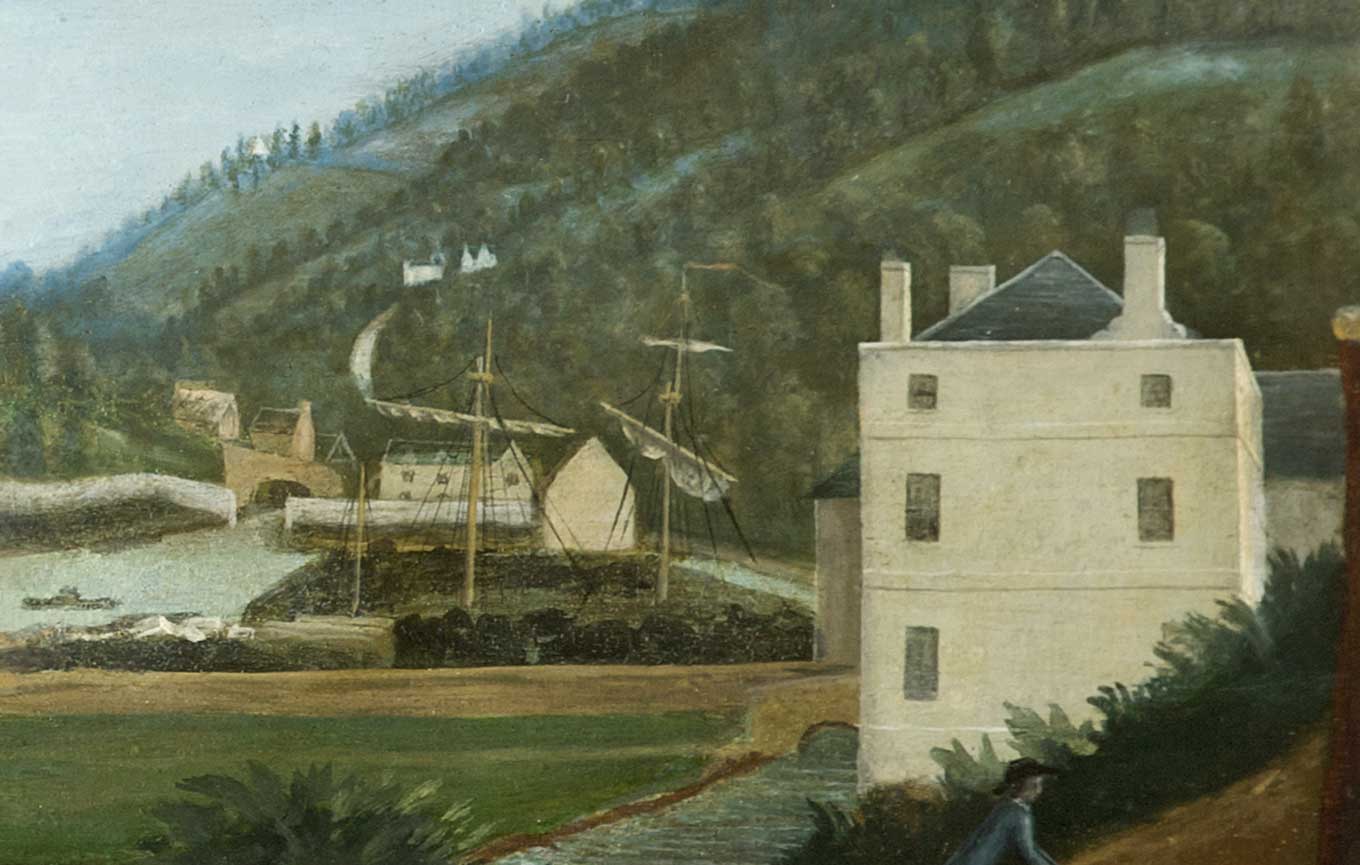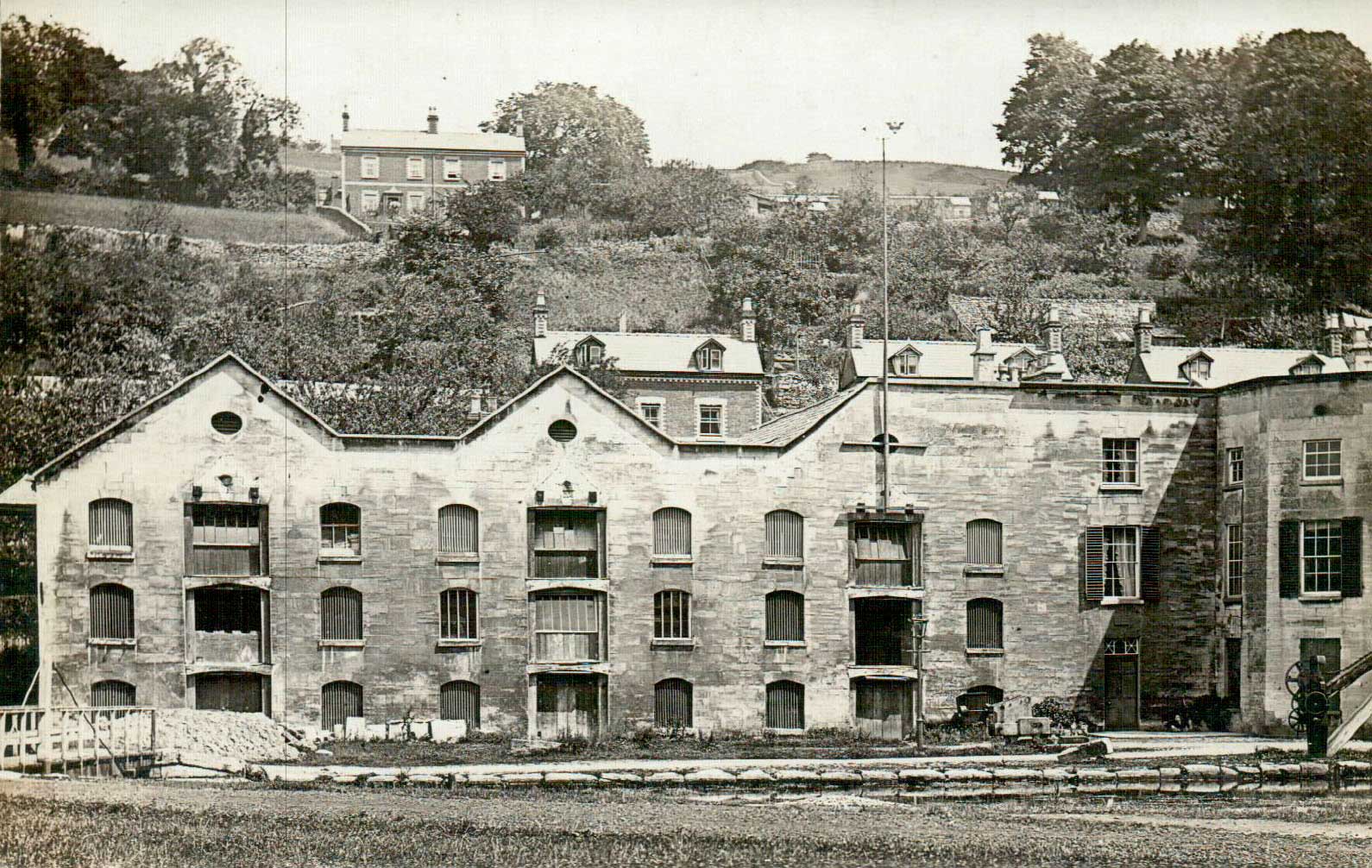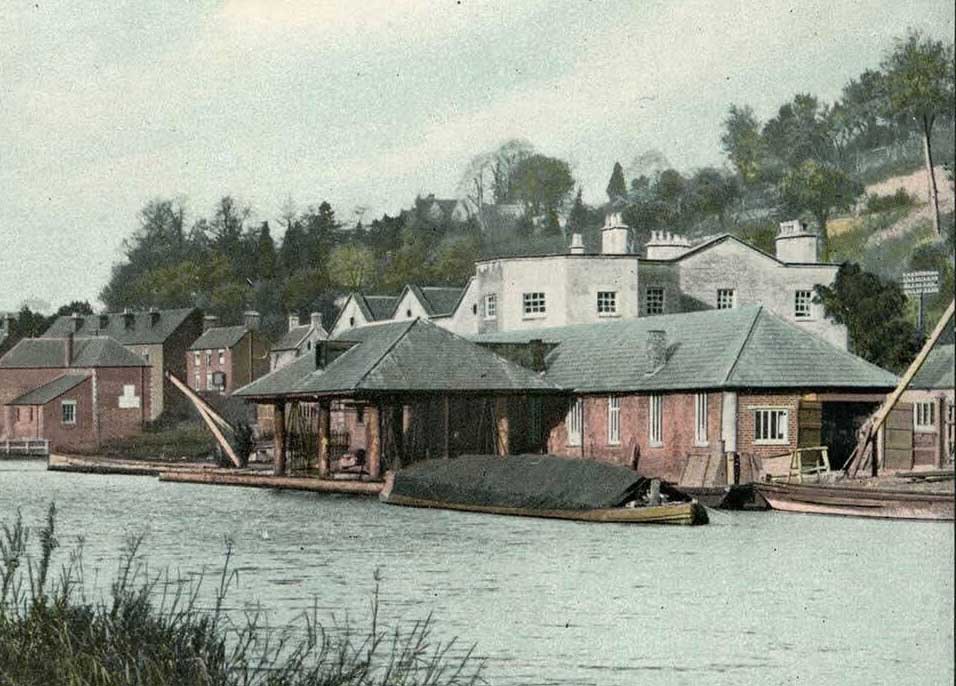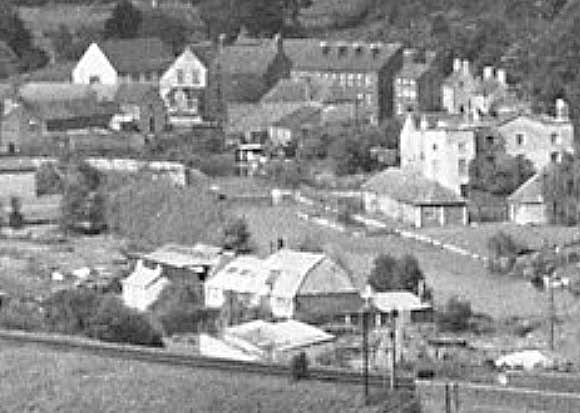Highlighting key Brimscombe buildings that have not survived.


The T&S Company built Port House in 1787 when expectations were buoyant. It was intended to provide accommodation for the resident agent, visiting officials from London and shareholders attending meetings. The lavish accommodation included a dining room, 32 ft by 18 ft, a drawing room, two parlours, 12 main bedrooms and 14 more on the attic floor. In practice, it was only used for shareholder meetings between 1790 and 1796, and for most other times, the only resident was the Company agent.
This absurd situation was eventually resolved in 1807, when the building and the adjoining Port Mill were sold as a unit; in due course, the structure of the house was incorporated into the mill.


The T&S Company built these four warehouses to store goods in transit between the differently sized barges from the Severn and from the Thames. The protruding bay on the right included an office for the clerks who had to keep track of the myriad of small items that passed through the warehouses.
Following the sale of Port House and Mill in 1807, the right-hand warehouse was converted into a house for the Company's agent. In time, this became known as Port House.
As new vessels came into use, the need for transshipment declined, and by the mid-nineteenth century, the warehouses were little used. In the 1890s, the whole block was converted to house the Brimscombe Polytechnic.


This giant weighing machine stood over a dock in front of the Long Shed. It was built in 1844 to provide a means of checking the cargoes carried along the canal.
A loaded barge was floated into the dock, the gates were closed, and the water drained out. This left the barge resting in a cradle on one side of a balance, which had a long arm on the other side, requiring only small weights to balance the barge.
Having previously weighed the barge empty, the difference between the two measurements gave the weight of the cargo. There is a model of this machine in Stroud Museum in the Park.


The building on the Island that later became the Port Foundry had a distinctive gambrel roof with two different slopes, but half of that was lost in later years.
The building was constructed in 1799, during a boom in the salt trade between Droitwich and the Thames Valley, when the salt needed to be transshipped between Severn barges and Thames barges. This boom soon came to an end, and the premises were little used for many years.
The building was given a new lease of life as an iron and brass foundry in the 1880s, and this use continued for over 100 years. When the foundry eventually closed in 1984, the firm had already diversified into making plastic mouldings, a process that continued for a few more years.
Sale of Port House & Mill from Gloucester Journal 28 Sep 1807.
Conversion of warehouse to agent's house from TS/158, 1 Oct 1808.
Declining use of warehouses from the last recorded imports in TS/29.
Conversion of warehouses to Polytechnic from TS/261 rental.
History of Port Mill from https://www.british-history.ac.uk/vch/glos/vol11/pp119-132.
Construction of salt warehouse from TS/164a p170.
History of Terrace House from the TS minute books.
Erection of barge weighing machine from TS/165a, 13 March to 11 Dec 1844.
Salt warehouse on the Island from TS/210/2 and TS/163 p254.
Start of foundry on the Island from 1882 OS Map.
End of foundry on the Island from Western Daily Press 14 Mar 1984.